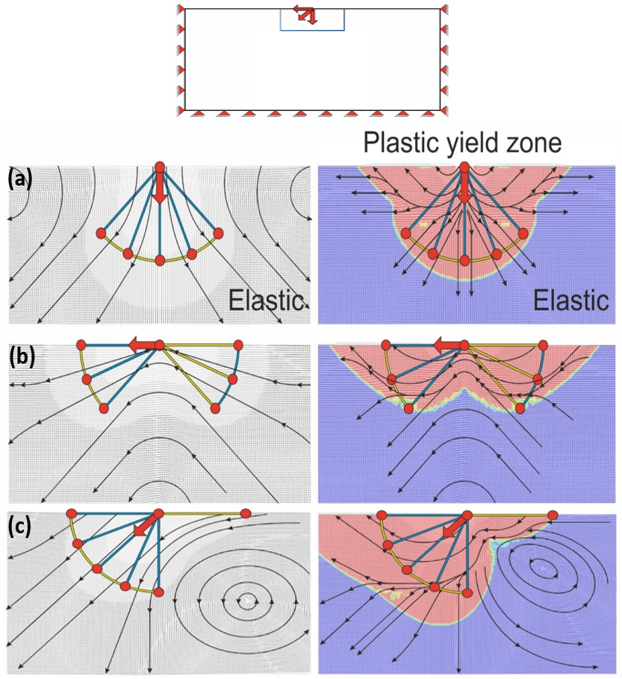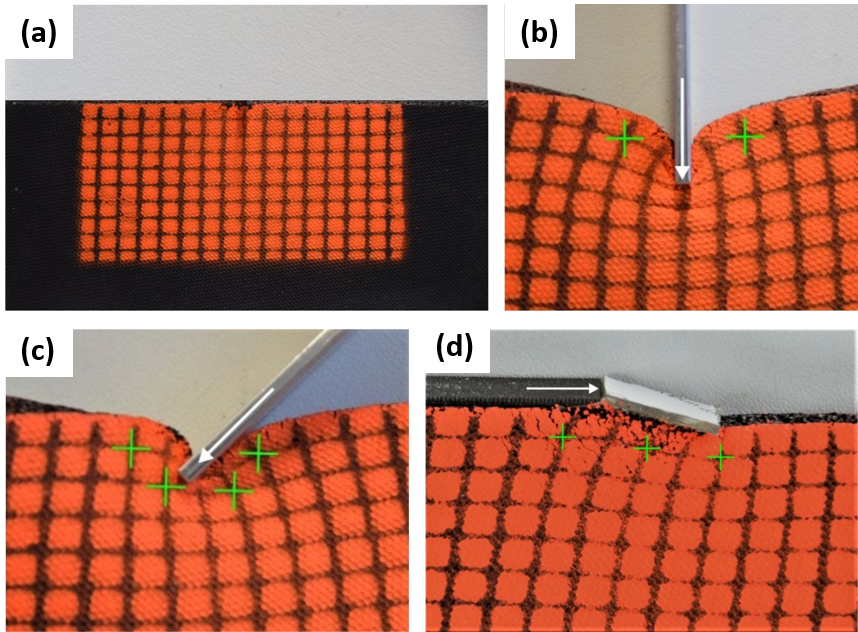Tribology
FEM results for different forces as cross-sections at the symmetry axis. On the left-hand side, results for a purely elastic response are shown, while on the right elastic-plastic material behavior is modeled. The plastic yield zones are colored in red. In (a) the point force is acting perpendicular to the surface, in (b) the force is parallel to the surface and in (c) the acting force is at an angle of 45 to the surface normal. The force cone method predictions are superimposed in each panel.
Model experiments with moss rubber. These simplified experiments illustrate the relationship between the angle of force attack and the location of the whirls. The surface of a standing moss rubber plate was coated red and marked with a rectangular grid of black lines. In (a) the unloaded moss rubber plate is shown. In (b) the surface of the rubber plate is indented vertically, in (c) the force is acting under an angle of 45° and (d) the material is loaded parallel to the surface. In (b–d), the deformed material can be followed by the grid in black, while the original — unloaded — location of select intersection point are marked by green crosses.
More about this research group at IAM-ZM


